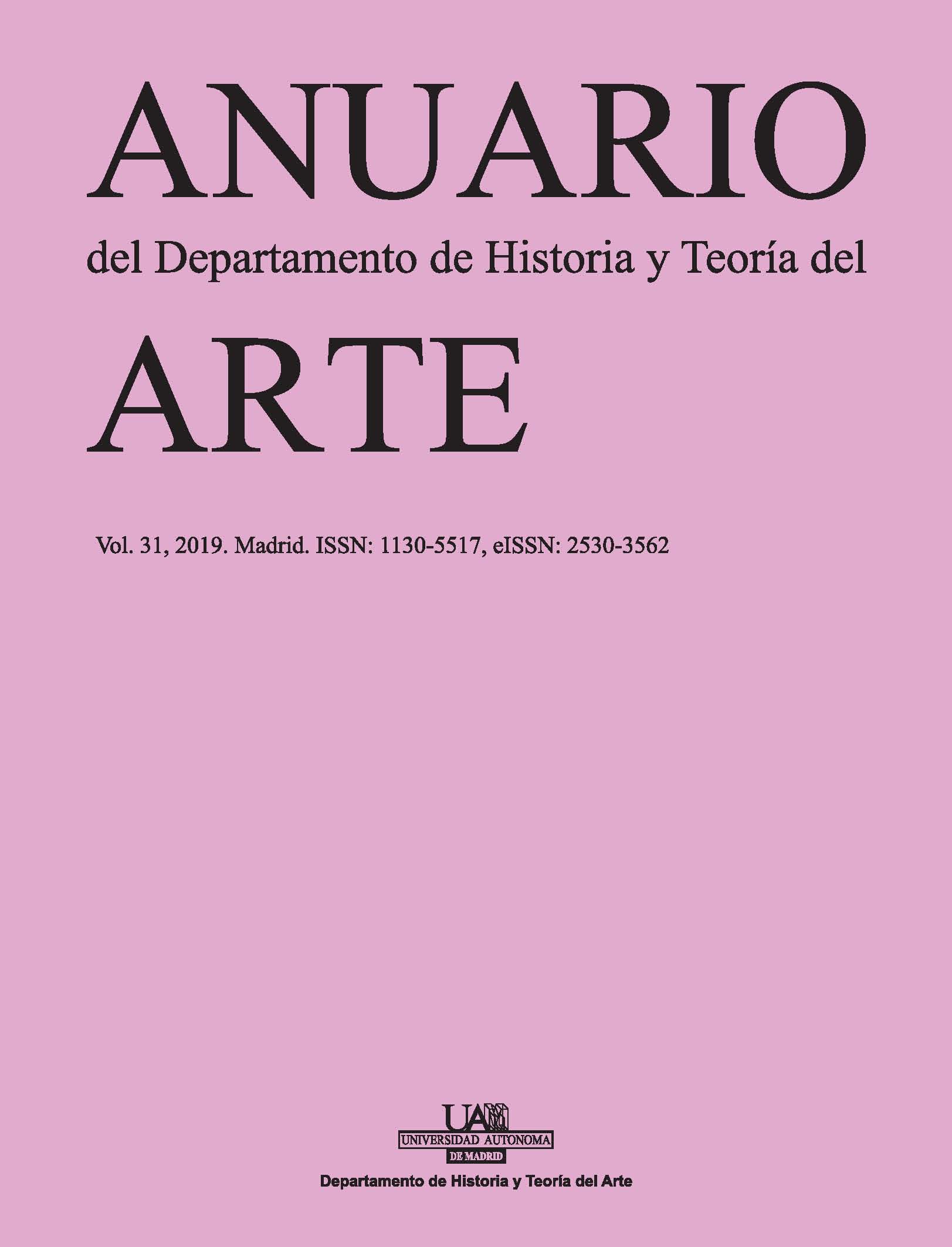Keywords:
Yto Barrada, Homo sacer, Ariella Azoulay, Judith Butler, Hannah Arendt, Migrantes, Tangier
This work is licensed under a Creative Commons Attribution 4.0 International License.
Abstract
Yto Barrada’s documentary photos and films show the complexity of life in the borderlands, migrants waiting for the right moment to cross the border and the effects of the border in the local population. And the artist represents it far away from any orientalist or exotic cliché. Some theorists have understood her work as the representation of individuals without agency, individuals devoid of representable identity. However, we propose in this article a new interpretation based on the theories of Ariella Azoulay, Judith Butler and Hannah Arendt. According to these interpretations, we understand that in Barrada’s work these individuals, and the city of Tangier itself, are made visible and represented as full of agency; and the visual memory of the city of Tangier and the society who inhabits it, is recovered and made visible.
Downloads
References
Giorgio AGAMBEN, Homo Sacer. El poder soberano y la nuda vida, Valencia, Pre-textos, 2013, DOI: 10.1080/09697250802156067.
Giorgio AGAMBEN, “Más allá de los derechos del hombre”, en Medios sin Fin. Notas sobre la política, Valencia, Pre-textos, 2001.
Hannah ARENDT, La vida del espíritu. El pensar, la voluntad y el juicio en la filosofía y en la política, Madrid, Centro de Estudios Constitucionales, 1984.
Hannah ARENDT, La condición humana, Barcelona, Espasa libros, 2015.
Negar AZIMI, “Tangerine Dreams and Magic in the City. A Conversation Between Negar Azimi and Yto Barrada”, en Riffs. Yto Barrada, Artist of the Year 2011, Ostfildern, Hantje Cantz, 2011.
Ariella AZOULAY, The Civil Contract of Photography, Nueva York, Zone Books, 2008, DOI: 10.1080/00335630.2011.609828.
Ariella AZOULAY, “Citizenship Beyond Sovereignty: Towards a Redefinition of Spectatorship”, en Julian STALLABRASS (ed.), Documentary. Documents of Contemporary Art, Londres, Cambridge, Massachusetts, Whitechapel Gallery, The MIT Press, 2013.
Yto BARRADA, A Life Full of Holes: The Strait Project, Londres, Autograph ABP, 2005.
Yto BARRADA y Marie MURACCIOLE, “Ocupar el imaginario: una conversación”, Índex, n.o 2 (2011), pp. 12-16.
Walter BENJAMIN: Para una crítica de la violencia y otros ensayos. Iluminaciones IV, Madrid, Taurus, 2001.
Omar BERREDA e Yto BARRADA: Album Cinémathèque de Tanger, Barcelona; Tánger, Institut de Cultura de la Ajuntament de Barcelona, Cinémathèque de Tanger, 2011.
Fina BIRULÉS, "Contingencia, historia y narración en Hannah Arendt", en La filosofía de Ágnes Heller y su diálogo con Hannah Arendt [en línea], http://congresos.um.es/ahha/ahha2009/paper/viewFile/6291/6031 [Consulta: 20 de julio de 2016].
Judith BUTLER, Marcos de guerra. Las vidas lloradas, México D.F., Paidós Mexicana, 2010.
Cinémathèque de Tanger [en línea], www.cinemathequedetanger.com [Consulta: 10 de marzo de 2018].
Charlotte COLLINS, “Morocco Unbound: An Interview with Yto Barrada”, en Open Democracy, Free Thinking of the World [en línea], http://www.opendemocracy.net/arts-photography/barrada_3551.jsp [Consulta: 5 de marzo de 2018].
Charlotte COLLINS, "The Photography of Yto Barrada. A Pervasive Sense of a People in Limbo", Qantara.de [en línea], https://en.qantara.de/content/the-photography-of-yto-barrada-a-pervasive-sense-of-a-people-in-limbo [Consulta: 5 de marzo de 2016].
Amanda CRAWLEY JACKSON, "'Cette poétique du politique': Political and Representational Ecologies in the Work of Yto Barrada", L’Esprit Créateur, vol. 51, n.o 1 (2011), pp. 53-67, DOI: 10.1353/esp.2011.0007.
T.J. DEMOS, “Life Full of Holes”, Grey Room Summer, n.° 24 (2006), pp. 72-87. https://doi.org/10.1162/grey.2006.1.24.72
T.J. DEMOS, The Migrant Image. The Art and Politics of Documentary during Global Crisis, Durham, Londres, Duke University Press, 2013. https://doi.org/10.1215/9780822395751
Boaventura De Sousa Santos, “Crisis de la constitución: ¿es posible un constitucionalismo transformador en las sociedades capitalistas, colonialistas y patriarcales?”, conferencia impartida en el marco del programa Máquinas constituyentes: poder constituyente, biopolítica, democracia, organizado con la Fundación de los Comunes y en colaboración con Intermediae en el Museo Nacional Centro de Arte Reina Sofía, Madrid, el 14 de marzo de 2016.
Anthony DOWNEY, “A Life Full of Holes”, Third Text, vol. 20, n.° 5 (2006), pp. 617-626, DOI: 10.1080/09528820601010452.
Anthony DOWNEY, “Zones of Indistinction: Giorgio Agamben’s ‘Bare Life’ and the Politics of Aesthetics”, Third Text, vol. 23, n.° 2 (2009), pp. 109-125, DOI: 10.1080/09528820902840581.
Nuria ENGUITA MAYO, “Yto Barrada. Concrete Allegories”, Parkett, Zürichz, Parkett, 2012, pp. 178-193.
Okwui ENWEZOR, “A Radiant Conflagration: (H’reg) on Burning and the Subjectivity of Photography in Yto Barrada’s Work”, en Riffs. Yto Barrada, artist of the year 2011, Ostfildern, Hantje Cantz, 2011.
“FAUX DEPART Trailer. Festival 2015”, Toronto International Film Festival [en línea] https://www.youtube.com/watch?v=UQSCRFkHVXM [Consulta: 10 de marzo de 2018].
Friedhelm HÜTTE, “At Second Glance. Notes on Yto Barrada’s Photographs”, en Riffs. Yto Barrada, Artist of the Year 2011, Ostfildern, Hantje Cantz, 2011.
Nico ISRAEL, “Border Crossings”, Artforum International, vol. 45, n.° 2 (2006), pp. 246-247.
Abdellah KARROUM, "Yto Barrada: A Modest Proposal", Nafas [en línea], http://universes-in-universe.org/eng/nafas/articles/2010/yto_barrada [Consulta: 3 de marzo de 2018].
Laura U. MARKS, Hanan al-Cinema: Affections for the Moving Image, Londres, Cambridge, Massachusetts, The MIT Press, 2015. https://doi.org/10.7551/mitpress/9906.001.0001
Modern Heritage Observatory (MoHO), [en línea], http://www.modernheritageobservatory.org/ [Consulta: 10 de abril de 2018].
Rasha SALTI, “Sleepers, Magicians, Smugglers: Yto Barrada and the Other Archive of the Strait”, Afterall: A Journal of Art, Context and Enquiry, vol. 16 (2007), pp. 98-106. https://doi.org/10.1086/aft.16.20711663
Ila SHEREN, “Spotlight Essay: Yto Barrada, Landslip, Cromlech de Mzora (2001) and Tunnel -Disused Survey Site for a Morocco-Spain Connection (2002)”, Spotlight Series Mildred Lane Kemper Art Museum [en línea], http://www.kemperartmuseum.wustl.edu/node/11241 [Consulta: 8 de febrero de 2018].
Susan SONTAG, Ante el dolor de los demás, Madrid, Alfaguara, 2003.
Susan SONTAG, Sobre la fotografía, México, D.F., Alfaguara, 2006.
Daniel SOUTIF, “The Vagueness of the Future: Images by Yto Barrada”, en Riffs. Yto Barrada, Artist of the Year 2011, Ostfildern, Hantje Cantz, 2011.
Nadia TAZI, “The State of the Straits”, Afterall: A Journal of Art, Context and Enquiry, vol. 16 (2007), pp. 90-97. https://doi.org/10.1086/aft.16.20711662
Évelyne TOUSSAINT, “Yto Barrada: figures de résistance à la domestication de l’espace”. Itinéraires, (2013), DOI: 10.4000/itineraires.949.
Riffs. Yto Barrada, Artist of the Year 2011, Ostfildern, Hantje Cantz, 2011.
Yto Barrada [en línea], http://www.ytobarrada.com/ [Consulta: 5 de noviembre de 2017].
“Yto Barrada”, Galerie Polaris [en línea], http://www.galeriepolaris.com/artistes.php?id=3 [Consulta: 5 de noviembre de 2017].
“Yto Barrada”, Sfeir Semler Gallery [en línea], http://www.sfeir-semler.com/gallery-artists/yto-barrada/ [Consulta: 5 de noviembre de 2017].

